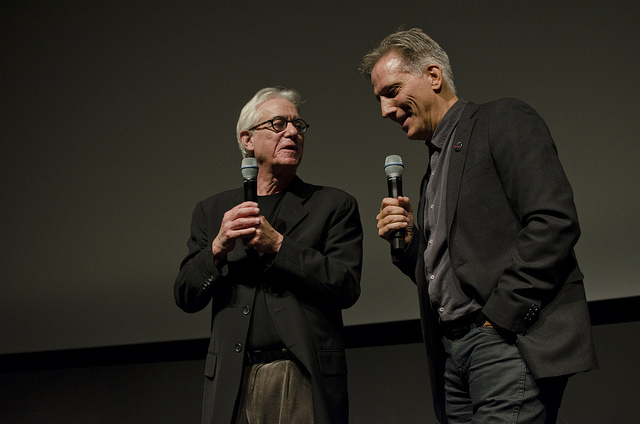Revenge of the Mekons: From Punk to Cult

This post was written by DOC NYC blogger Karen Backstein

To make a great documentary, it helps to have a great subject. Joe Angio’s REVENGE OF THE MEKONS, about The Mekons, a British punk band that’s been rocking for more than 35 years, has just that. You could feel the excitement even before the film screened; fans whooped and clapped as the musicians entered the room and there was more than the usual excited whispering.
Formed in Leeds, England just before the rebellious punk movement erupted, The Mekons consisted of a core of art students with few musical skills at the time. They came of age in Prime Minister Margaret Thatcher’s turbulent Britain, which forged their leftist political and musical sensibilities. From the start, they viewed themselves as a collective, rejecting what one band member called “the cult of the artist,” with its attending photo ops and fame. Even today, they write songs only when all of its members are together. Always on the edge of success, they never quite made it. Because they wanted total control, opportunities with big labels quickly evaporated. Yet, to the amazement of the music aficionados who followed The Mekons through the years, the band not only continues to play, but gets better. Their music has evolved, thanks to producers who introduced them first to British folk songs and then to American honky-tonk. These influences, combined with the group’s punk origins, result in a sound quite unlike anything else. From the standard guitars and drums, the arrangement has shifted to include fiddles, an accordion, and even unusual instruments from Eastern Europe.
Filled with archival footage and photos, as well as interviews with critics, producers, and visual artists, REVENGE OF THE MEKONS both entertains and informs. Along with the uniformly funny, smart and self-aware band members past and present, we hear from filmmaker Mary Harron, music critic Greil Marcus, designer/artist Vito Acconci, writer Jonathan Franzen, and comic Fred Armisen, the former husband of singer Sally Timms. The visual style often captures the playful spirit and look of punk in its heyday.
After the screening, Marcus led a discussion with Angio and the band. Asked how he convinced The Mekons to let him make the film, Angio responded that he and the band have friends in common who vouched for him. Angio began shooting in October 2007, plunging right in when the band told him they were going on tour. He immediately created two lists of songs, one with what he wanted and another with ones he thought were necessary.
The Mekons admitted they all found it hard to see themselves as subjects of a documentary. “It wasn’t as bad as I thought it would be,” member Jon Langford joked. Both he and Timms said they felt that only the music matters, and that they don’t understand why anyone wants to see more. Obviously people do, because when the audience was asked whether it enjoyed the film, it responded with resounding applause and cheers.
Karen Backstein has taught cinema studies in a number of New York-area universities and her reviews have appeared in CINEASTE magazine, as well as in several academic journals and anthologies.

